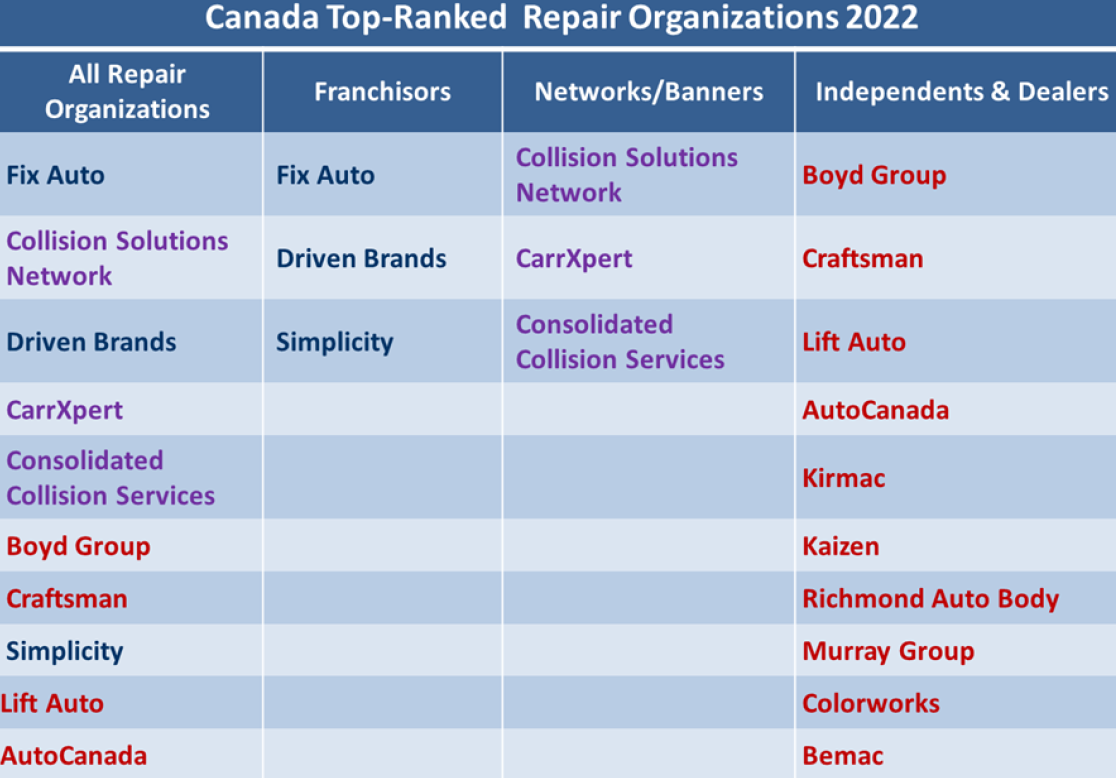
Romans Group: Pandemic recovery continues in U.S. & Canadian collision repair markets
By onMarket Trends
Consulting firm, The Romans Group, has found in its most recent research that the U.S. and Canadian collision repair marketplace continues to steadily recover from the impacts of the COVID-19 pandemic, despite the tightening economy, including in the broader auto physical damage landscape.
“Despite the continued technician shortage, this was possible due to the industry’s general improvement in better-optimizing production throughput and the ongoing increase in severity throughout 2022 and continuing into 2023,” Romans Group wrote in its 17th annual whitepaper. “The recovery from the pandemic’s downward impact in 2020 and 2021 continues to have near-term relevance for comparison purposes for the post-pandemic years of 2022 and 2023.”
Improvements were made possible by a steady number of vehicles returning to the road and a consistent and stable number of collisions, which continues to fuel demand for collision repair services without any significant decrease in sight, according to the firm. However, it’s noted that the U.S. technician shortage remains a significant challenge to timely repairs.
TechForce Foundation recently released a new Technician Supply & Demand report that found student completions in all segments, including collision repair, are up. Although last year’s 4,725 were higher than the 4,487 graduates in 2021, it was 45% still lower than the 7,469 that graduated in 2013.
Evolving North American technology trends this year have put a growing emphasis on electric vehicles (EVs) and the presence of artificial intelligence (AI), which Romans Group says the collision repair industry hasn’t been immune to.
U.S. EV sales increased in 2022 versus an overall decline in total U.S. auto sales, but Romans Group predicts the possibility of a sales and market share growth slowdown as EV inventory increases. And while EV sales and inventory share grow, so does the total cost of repair and the number of parts replaced on EVs compared to non-EVs, the whitepaper states.
The whitepaper notes some progress between insurers and OEMs in the adoption and implementation of OEM vehicle repair standards and how to keep the repairer out of the middle of the “two sometimes conflicting repair processes and procedures.” However, specific examples weren’t given in the preview released to the press.
Romans found — as others in the industry note — that average repair costs have skyrocketed because of greater repair complexity, higher inflation-based labor expenses, more parts, higher parts costs, supply chain issues, diagnostic scans and calibrations costs, and higher costs from new materials such as aluminum and carbon fiber.
“The growing cost and complexity of vehicle repairs, as well as an increase in bad driving habits, are creating ongoing problems for the auto insurers,” Romans wrote. “There were and continue to be several reasons for this unprecedented poor performance.”
When it comes to M&A and consolidation, Romans said the benefits and risks to all consolidators continue to be the ability to quickly, efficiently, and effectively integrate expansion and acquisitions. That is done by managing and navigating new market dynamics and scale, growing client and revenue base, balancing ongoing insurance DRP and OEM certification program requirements, leveraging supplier relationships and the economies of purchasing power, and effective integration of systems and business operating models within new single-and multiple-location markets, according to the whitepaper.
“Industry growth and expansion creates the opportunity for an inevitable change and shift among MSOs, insurers, and OEMs in the balance-of-power dynamics, especially in many of the more consolidated markets such as Dallas, Chicago, Los Angeles, and Philadelphia,” Romans wrote. “The industry is one step closer to a tipping point where the consolidated MSOs’ revenue outnumbers the remaining independent and dealer consolidated revenue and industry scale.”
It’s noted in the paper that during 2022, a more aggressive group of mid-size private-equity-funded consolidators accelerated both single and multiple-location acquisitions and geographic diversity.
Romans’ sentiments echoed those of three presentations given during SEMA Week on collision repair center consolidation: the big will continue to get bigger.
Romans adds, “The strategic focus at this time for many consolidators continues to be to pursue both new and existing market growth through single and multiple-location acquisitions. However, this expansion focus has been slowed by the economic realities associated with increased financing costs for acquisitions and re-capitalizing… We expect that by 2027, the top three consolidators will grow from their 2022 market share of over 22% to up to 32%.”
The top three are Caliber Collision, Gerber Collision/The Boyd Group, and Crash Champions.
A recent report from Cox Automotive, based on a survey of dealership and independent collision repair technicians, found that dealership service accounted for 30% of all service visits in the U.S. this year, down from 35% in 2021 (the last time the service study was released). General repair and service stations were a close second this year at 28%. The last 42% are made up of tire repair stores, body shops, and specialists.
In Canada, the collision repair industry continued an uneven pandemic recovery throughout 2022 and this year, Romans wrote, with many similar risks and challenges to the U.S. market.
“Opportunities to increase revenue production have carried forward throughout the year due to an increase in sales driven by higher repair costs and parts inflation, vehicle repair complexity, and increased scanning and calibration services. Despite this improvement, a constrained production environment continues due primarily to the ongoing technician shortage and increased delays with insurance company response times to appraise and adjust estimates and vehicles repairs.”
Beginning in 2022, up to 70% of repair facilities began refusing to take non-drivable vehicles, the whitepaper adds. Some shops were booking out seven to nine months with the notion that “avoiding non-drivables would make more space for quicker turnaround repairs.”
The full report can be purchased by sending an email to Mary Jane Kurowski with The Romans Group at maryjane@romans-group.com.
Images
Featured image: Stock photo inside a collision repair shop. (Credit: mnbb/iStock)


